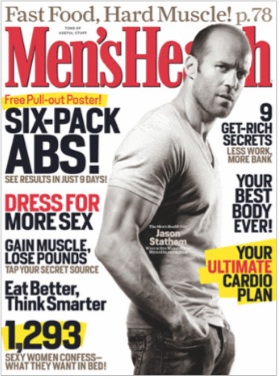Cross-posted at Love Isn’t Enough.
Diego Costa sent in an image of Jaden Smith, star of the remake of The Karate Kid, at a recent promotional event in China. In it, 11-year-old Jaden has lifted his shirt to show off his abs, while co-star Jackie Chan and a man I presume is the event host marvel at them:
What struck Diego is how this image was received differently than a similar image of an 11-year-old girl pulling up her shirt to show off her abs might be seen. For instance, The Huffington Post showed the image without any comment about its content. We might compare that to the public outcry over the images of Miley Cyrus wrapped in a sheet that came out two years ago. I also suspect The Huffington Post article might say something about the adult men in the above photo if it were a girl rather than a boy they were touching/ogling.
Apparently when he went on The View, Jaden said he’s “already a great kisser” and the audience cheered, though I can’t find a video of it.
Diego says,
Why is the exposure of boy bodies deemed appropriate whilst the revealing of girls’ bodies must always accompany relentless probing, judging and outrage? If we agree that we shouldn’t sexualize children, then let’s not do it to any child. And, while we are at it, let’s also not assume infantile heterosexuality by asking if boys already have “a girlfriend.”
Excellent points. I suspect if an 11-year-old girl went on The View and said she was a good kisser already, she and her parents would be attacked in the press, people would express horror, and rumors would circulate about whether she’s been sexually abused, is already sexually active, etc. etc. But when an 11-year-old boy does it? That’s cute! He’s on his way to being a smooth-talking ladies’ man!
I can’t decide if, or to what degree, race might be at play here. There is certainly a tendency to adultify non-White children — that is, to treat them as mini-adults rather than children at much earlier ages than White kids are. This includes sexuality (for instance, teachers often assume Black girls are sexually active at younger ages than White girls). My recent post on the hypersexualization of a 13-year-old Latino boy discussed this topic.
But I’m not sure if that’s playing a major role here, or if gender assumptions and him being the son of a much-beloved celebrity couple are the more important factors. Thoughts?
For another example, see our post on the Rolling Stone cover with Taylor Lautner.










